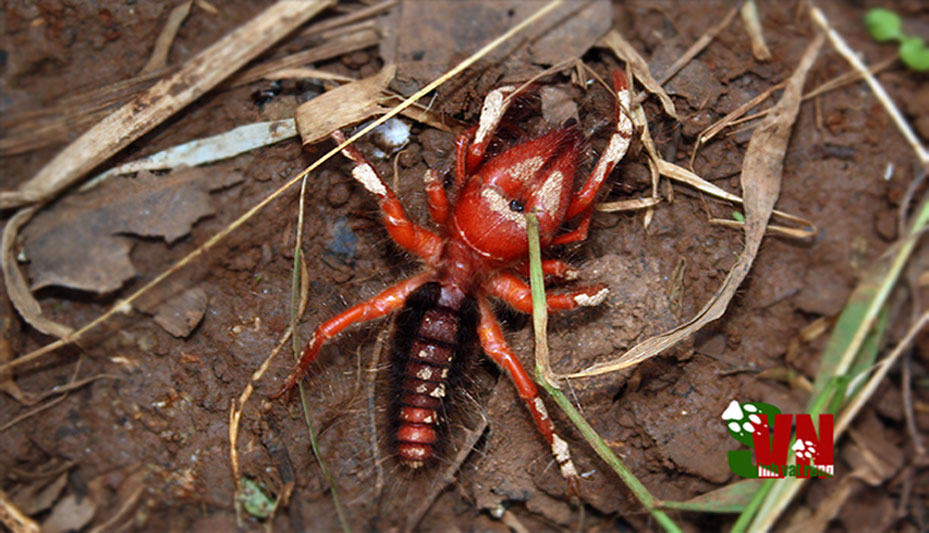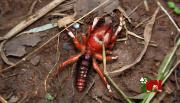
Camel spiders or Camel spiders belong to the order Solifugae, class Arachnida. Currently, in the world, there are about 1,000 species of 159 genera. They are mainly distributed in warm and dry climates or arid desert regions.

Camel spider Dinorhax rostrumpsittaci - Photo: Hoang Quang Duy - Lecturer in Biology, Central Highlands University.
They do not have venom glands, but can attack and prey on other invertebrates, lizards, birds and mammals.... They even attack humans and other animals. other mammals, they bite mainly for self-protection purposes. They have very strong pincers (Chelicerae), so the bite can infect humans or other animals by transmitting microorganisms, viruses or fungi..., the bite becomes infected if not carefully disinfected.
To date, in Vietnam, only one species of camel spider has been discovered Dinorhax rostrumpsittaci (Simon, 1877), this species was recorded by Simon (France) in both Indonesia and Vietnam from male samples, but also It is doubtful that this species is really only distributed in Vietnam. By 2018, a team of authors from Japan, the UK and Vietnam had confirmed the species distribution in several regions of Vietnam and described the offspring for the first time using both morphology and molecular biology.
Distribution: The species has been recorded in many areas of Vietnam, such as: Khanh Hoa, Lam Dong (collected directly in Di Linh, Lam Dong), Dong Nai (collected in Long Khanh, Dong Nai) , Ba Ria - Vung Tau, Tay Ninh, Binh Phuoc, Ho Chi Minh. As noted they are distributed throughout Indonesia (but not confirmed).
Habitat and ecology: This species was found in both planted forests, natural forests, industrial crops such as pepper gardens, even crawling into the house when it rains heavily, we also directly collected samples. along the highway... the species often appears after the first heavy rains of the season. It is not clear about the habitat, behavior, reproduction, season... The above data suggest that they can live in underground burrows, so when it rains, the nest is flooded, they crawl out. They usually appear at night to feed.
Toxicity: Not tested but some cases of infection after a bite have been reported.
References

Những người "trồng rừng" dưới đáy biển

Phát hiện mới về một số loài động vật không xương sống ở khu vực Quần đảo Trường Sa và Việt Nam

Ghi nhận loài chim di cư hiếm tại Việt Nam

Ghi nhận mẫu rết kích thước lớn của loài Scolopendra Cataracta ở Việt Nam

Bí mật về loài nhện lạc đà

Sự đa dạng và phong phú của sinh vật Việt Nam